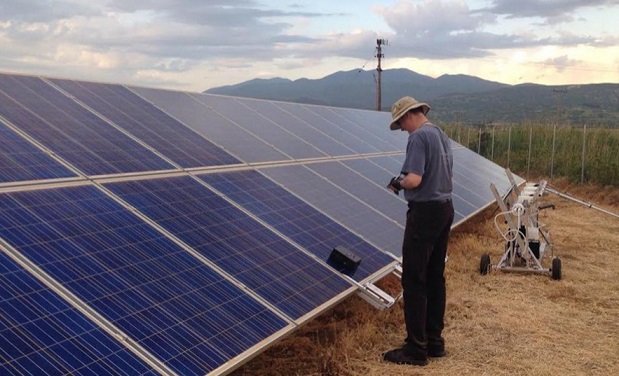The advent of digital technologies has opened up an unprecedented number of opportunities for the renewable energy industry, with asset owners now able to take advantage of sophisticated platforms that can integrate asset management and Enterprise Resource Planning (ERP) functionalities, automate business processes and provide advanced performance monitoring.
Despite this, the solar sector is still in its infancy when it comes to digitalization and has yet to capitalize on specialized software’s ability to both minimize business disruption during uncertain events, and tackle the perpetual challenges of data quality, data centralization and increasing project complexity.
As a result, many solar portfolios are still installed with legacy operations and maintenance (O&M) platforms, which offer relatively limited functionality. Asset owners who integrate software solutions capable of combining ERP and asset management software on the other hand can aggregate multiple functionalities into one platform. In this way, businesses can reduce complexity across monitoring, financial and operational data sets, as projects scale both technologically and geographically.
Monitoring performance in real-time
Producing highly accurate and comprehensive data is key to measuring the optimal performance of solar PV assets. By doing so, asset managers can establish whether a farm is underperforming, and if so why. Asset managers who don’t use sophisticated software platforms capable of generating such data risk reduced asset productivity due to unidentified problems causing downtime, blocking O&M activity from being completed on a preventative basis.
Combined ERP and asset management tools enable asset owners to capitalize on the benefits of preventative maintenance through real-time performance monitoring, which has the added benefit of providing greater transparency for stakeholders. Improved electricity output, higher asset availability and lower O&M costs combined generate a significant competitive edge for those portfolio owners who have made the investment in right optimization software.
In addition, by monitoring solar PV performance in real-time, asset owners can rapidly identify and resolve mechanical problems, extending asset lifetimes. As a result, sophisticated software can reduce asset owners’ dependence on supply chains which provide replacement components such as solar modules. In this way, businesses can mitigate their exposure to market volatility and supply chain disruption caused by unexpected events.
Collaboration across different functional teams
With the International Energy Agency forecasting that the solar market will account for over half of total renewables growth worldwide over the next four years, solar PV portfolios are predicted to continue expanding both geographically and technologically. To support this growth, companies are now having to manage a variety of activities – including administrative, technical and financial – and enlarge teams in order to stay cost effective and competitive.
Naturally, this has resulted in increased complexity over multiple business operations. Without further investment in software tools which can bring together different information streams into one place, managers may find it challenging and time consuming to effectively manage operations.
Though such inefficiency is often not obvious while projects are developing, eventually managers will have no choice but to re-evaluate processes when faced with mounting levels of complexity. To prevent this from becoming too laborious, asset owners can consider adopting software tools from day one and integrating processes and information management over time as complexity increases. The alternative often results in lost time and resources further down the line as managers struggle to unpick their deliverables and priorities.
Scalability
Current solar portfolios are usually composed of a number of different asset types and technologies, from residential rooftop arrays to industrial scale ground-mounted plants. However, the pace at which this trend has occurred has left some data management methods out of date, leaving portfolios paired with legacy software which remains incapable of concentrating various data sets into a single, comparable format.
By integrating independent technology-agnostic software, asset owners can draw data from multiple original equipment manufacturers’ (OEMs) systems onto one platform, providing more opportunities to develop, re-power or acquire new assets. Using this software can consequently simplify data management and enable leaner processes and work teams.
Conclusion
As the solar PV industry continues to expand globally, asset owners need to start waking up to the importance of sophisticated software solutions which combine ERP and asset management functionalities, integrating these platforms at the start of their solar assets’ lifetime. In this way, companies will be able to benefit from optimized productivity, time savings and returns while also mitigating challenges caused by supply chain disruption greater complexity and incompatible data formats.






